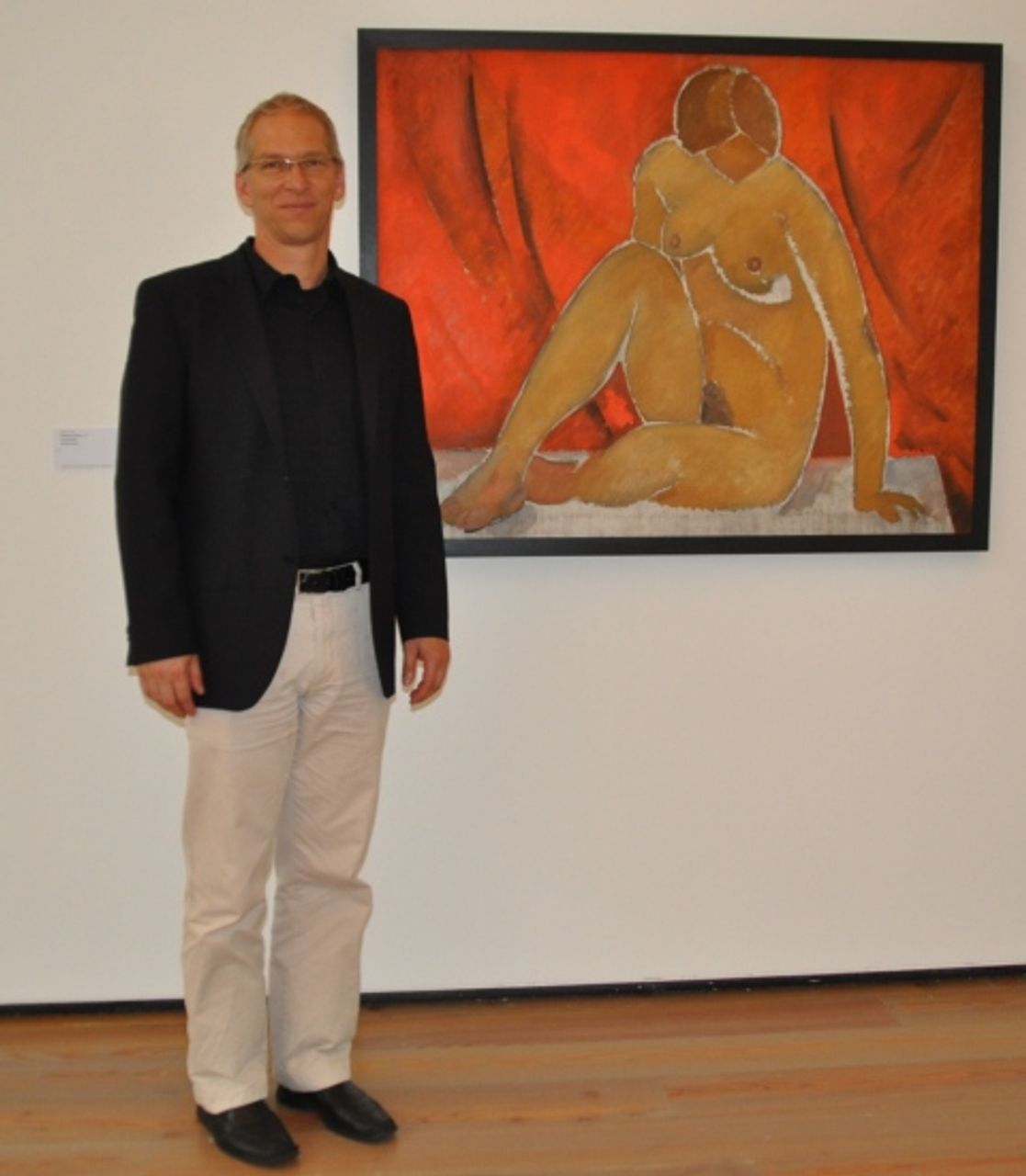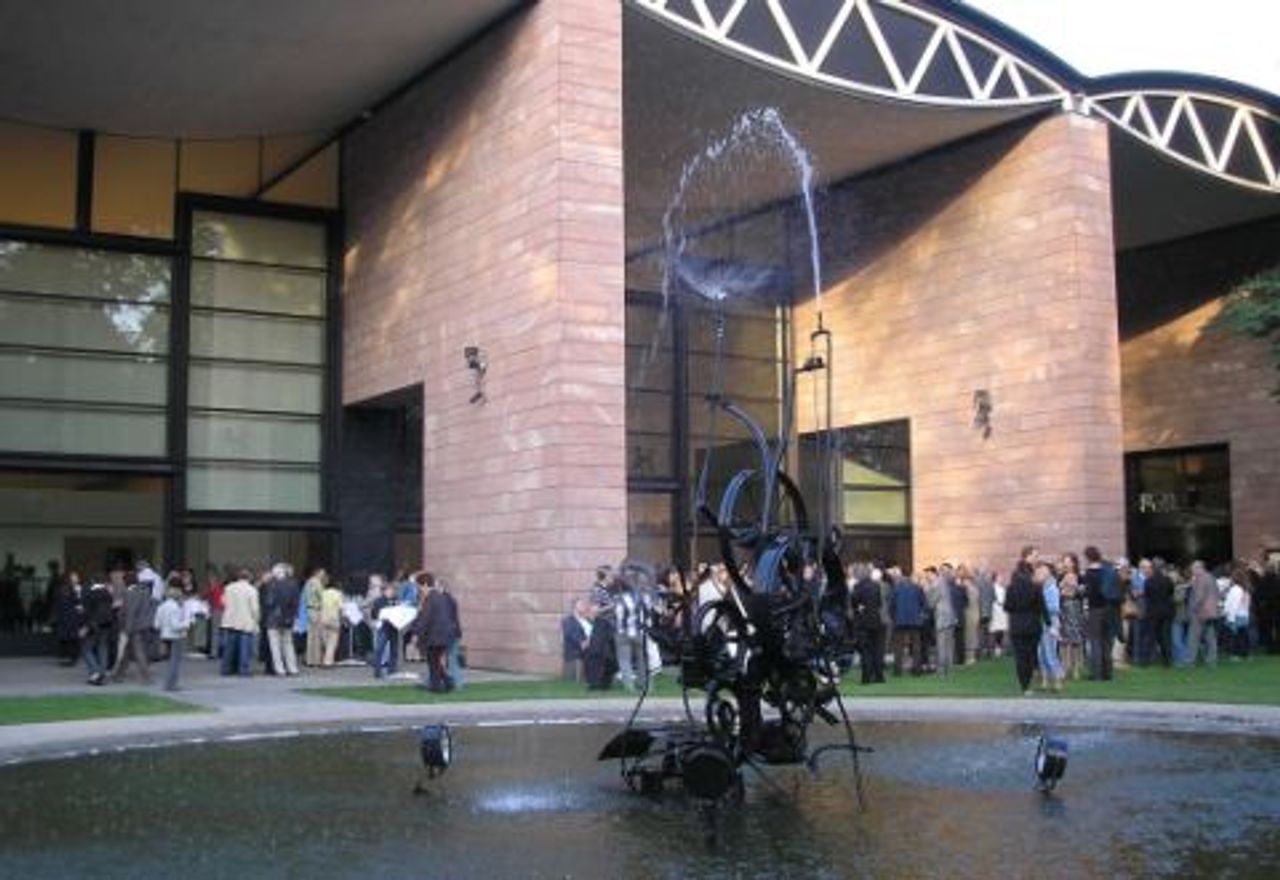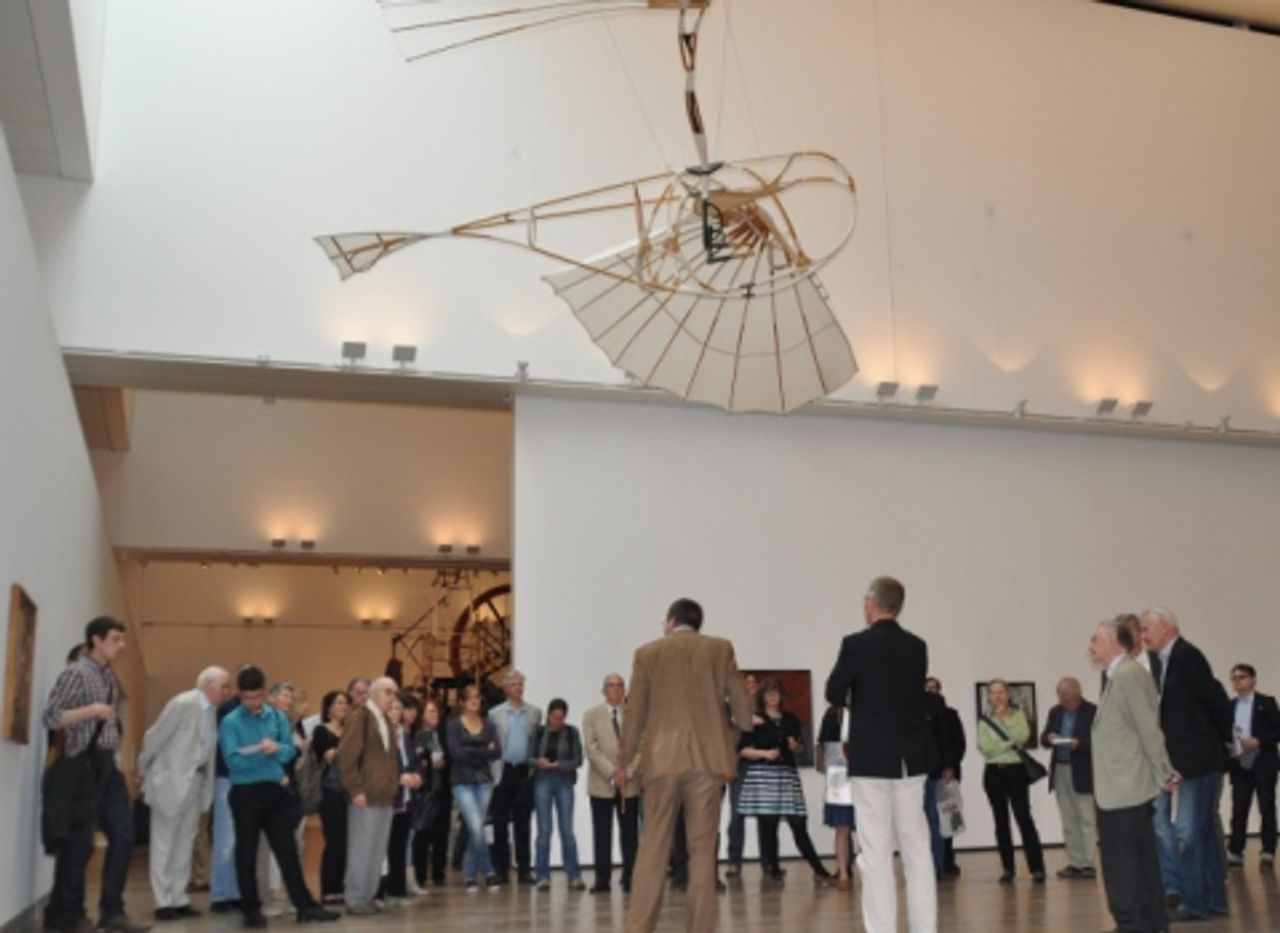The following is the second installment in a six-part series on the Exhibition of Russian-Soviet artist Vladimir Tatlin in Basel.
The Museum Tinguely in Basel, Switzerland, has dedicated a major exhibition to Vladimir Tatlin (1885-1953), one of the great Russian and Soviet avant-garde artists. This important exhibition runs until October 14. In Basel, on the opening day of the show, the World Socialist Web Site interviewed Roland Wetzel, the initiator of the exhibition and the museum’s director.
WSWS: Our first question deals with the name of the exhibition. You’ve entitled it: “Tatlin—new art for a new world”. Which new world do you mean: that of 1917, or today, or perhaps tomorrow?
 Roland Wetzel in front of Vladimir Tatlin: Female Model, 1913 (Tempera on canvas), State Russian Museum, St. Petersburg
Roland Wetzel in front of Vladimir Tatlin: Female Model, 1913 (Tempera on canvas), State Russian Museum, St. PetersburgRoland Wetzel: They are all meant in an equal sense, because I think everyone has some sort of vision of a better society (although perhaps more or less buried). Tatlin, of course, refers to this in his autobiography.
He grew up in tsarist Russia, experienced all the upheavals and was a pioneer for the new social order. He said, yes, he was among the first who volunteered for service after 1917 in the new society.
WSWS: Why did you decide to organise a Tatlin exhibition precisely at this time?
RW: I am very familiar with the artist Tatlin from my own artistic studies. His work has always fascinated me. Maybe it was an obvious choice, perhaps not: it could have taken place in two years’ time. I really wanted to take a stand that is perhaps not immediately relevant to Jean Tinguely,[1] who did not directly take up Tatlin’s work, but rather it shows how Tinguely was politically oriented. Russian Constructivism was very important to him. He had read almost all the anarchists and could quote them by heart.
Part of our programme is to present the inspirations for Tinguely, as well as his contemporaries, and his impact on the present. This became a more complex exhibition than merely presenting a role model for Tinguely. Only now do I realise how beautifully they complement one another here, the works of Tatlin and the works of Tinguely.
WSWS: Are there similarities between Jean Tinguely and Tatlin?
RW: There are several common starting points. It is certainly important that they both were interested in socially relevant art. Tinguely also posed the question: Whom is my art for? He was very keen that his art should be understood and have a direct impact. It is similar with regard to Tatlin and his big projects: his works undoubtedly have this immediate impact.
WSWS: Why do you think that Tatlin—a key innovator in art—is so rarely exhibited?
RW: I think two main reasons play a role. Probably the most important: Tatlin is not on the art market. He is not of any interest for gallery owners, because there is virtually nothing that could be sold today. The second reason is surely that all of his works are in Russia. It remains very expensive to get them on loan for an exhibition, and we were especially pleased that we were able to manage that so successfully.
 Museum Tinguely on the eve of opening of the exhibition
Museum Tinguely on the eve of opening of the exhibitionWSWS: What is the Museum Tinguely planning next?
RW: Nothing of comparable dimensions. In the late fall, we are planning the presentation of a major collection dealing with Tinguely and his environment in the 1960s. We want to present a comprehensive collection catalogue based on the excellent archive of this institution, which has grown steadily since we opened 16 years ago. There is so much material that we want to include and publish in this catalogue. We hope it will be a new standard reference work for research.
WSWS: You mention the 1960s. In 1968, there was the first-ever Tatlin exhibition in Stockholm. That period obviously motivated Tinguely as a period of new possibilities.
RW: For me, these were especially exciting years of social change: the years around 1968, like the period after 1910, which represented a real turning point. In art history, the originality of that time remains historically undervalued. At such interfaces, the arts increasingly amalgamate—theatre, art, literature are all in a fruitful dialogue. That’s the case with Tatlin, and also applies to Tinguely.
In addition, it is essential for an understanding of Tatlin to capture the interaction between the development of art and the social and political upheavals. In particular, in the case of Tatlin, these elements were inextricably linked. We are therefore very grateful for the contribution to the exhibition catalogue by the art critic of the World Socialist Web Site, David Walsh, because it helps to bring out these relationships and provide the necessary political and historical background to Tatlin and his artistic views.
WSWS: While the Russia avant-garde was strangled by Stalinism, there was a similar process taking place in Germany. Under the Nazis, museums were “cleansed” and what they designated as “degenerate art” was sold off or destroyed, or forced to go underground. What are the consequences of such a development for history and society?
RW: That is a major caesura, when artistic freedom is restricted in such a fashion and it is no longer possible for the artists to express themselves freely. In the case of Tatlin, much of his work was destroyed, happily other parts of it were tucked away in museum archives and could once more be made public—even if not until much later. His corner counter-relief, for example, was lost until 1990. Basically, the maxim is true: a free society needs a free art.
WSWS: Was it not the case that in the space of 15 to 25 years the Russian and Soviet avant-garde took up and developed most of the themes that dominated the art of the twentieth century, often in a better and more fruitful manner than its antecedents? Would you agree with this?
RW: Certainly, I agree.
 Roland Wetzel and the curator of the exhibition, Gian Casper Bott (center), in the main exhibition space.
Roland Wetzel and the curator of the exhibition, Gian Casper Bott (center), in the main exhibition space.WSWS: Isn’t this the reason why the art of the Russian avant-garde continues to excite and attract the attention of an audience that extends beyond the usual art-engaged public? This seemed to be confirmed at the exhibition’s opening, which obviously was unusually well attended.
RW: Yes, exactly. Tatlin’s oeuvre offers so very many opportunities and openings. With the tower, he addresses the major themes of humanity and stimulates the imagination. His works of art are marked by an incredible power and directness. You can see this very well when one compares the originals to later reconstructions: there’s a big difference.
To be continued
Explanatory notes:
[1] Jean Tinguely (1925-1991), the Swiss sculptor and experimental artist after whom the museum in Basel is named. Tinguely worked in a number of directions, influenced in particular by Constructivism, Dadaism and kinetic art. The Museum Tinguely website explains that his “machine sculptures engage in a loud and multi-coloured conversation with the onlooker: Through his works, Jean Tinguely communicates and interacts with the spectator. The machine functions and becomes art. Tinguely’s artworks sparkle with wit, vitality, irony and poetry. Seen against a deeper background, though, they also reveal a feeling for tragicomedy, for the enigmatic and inscrutable.”
